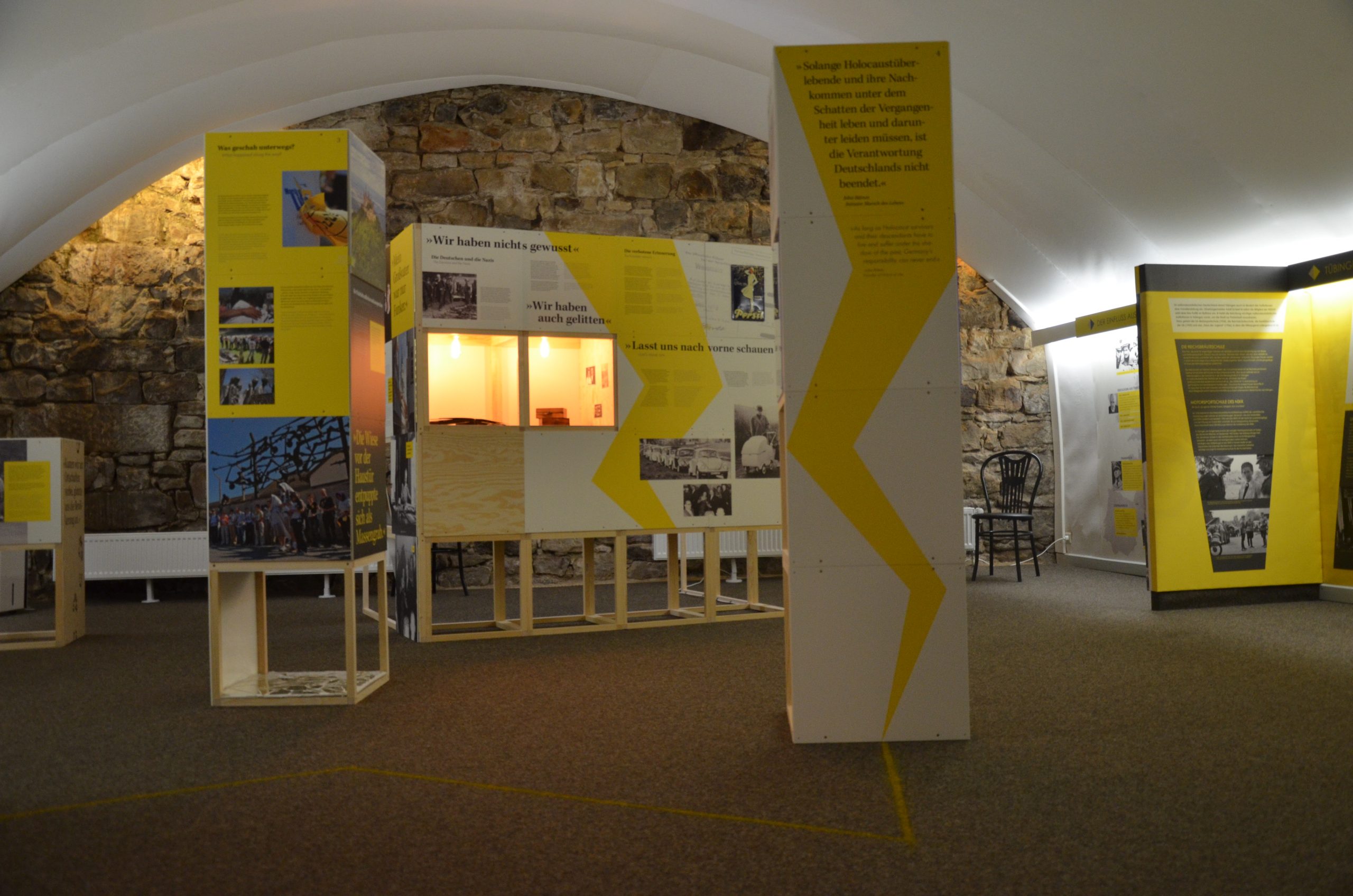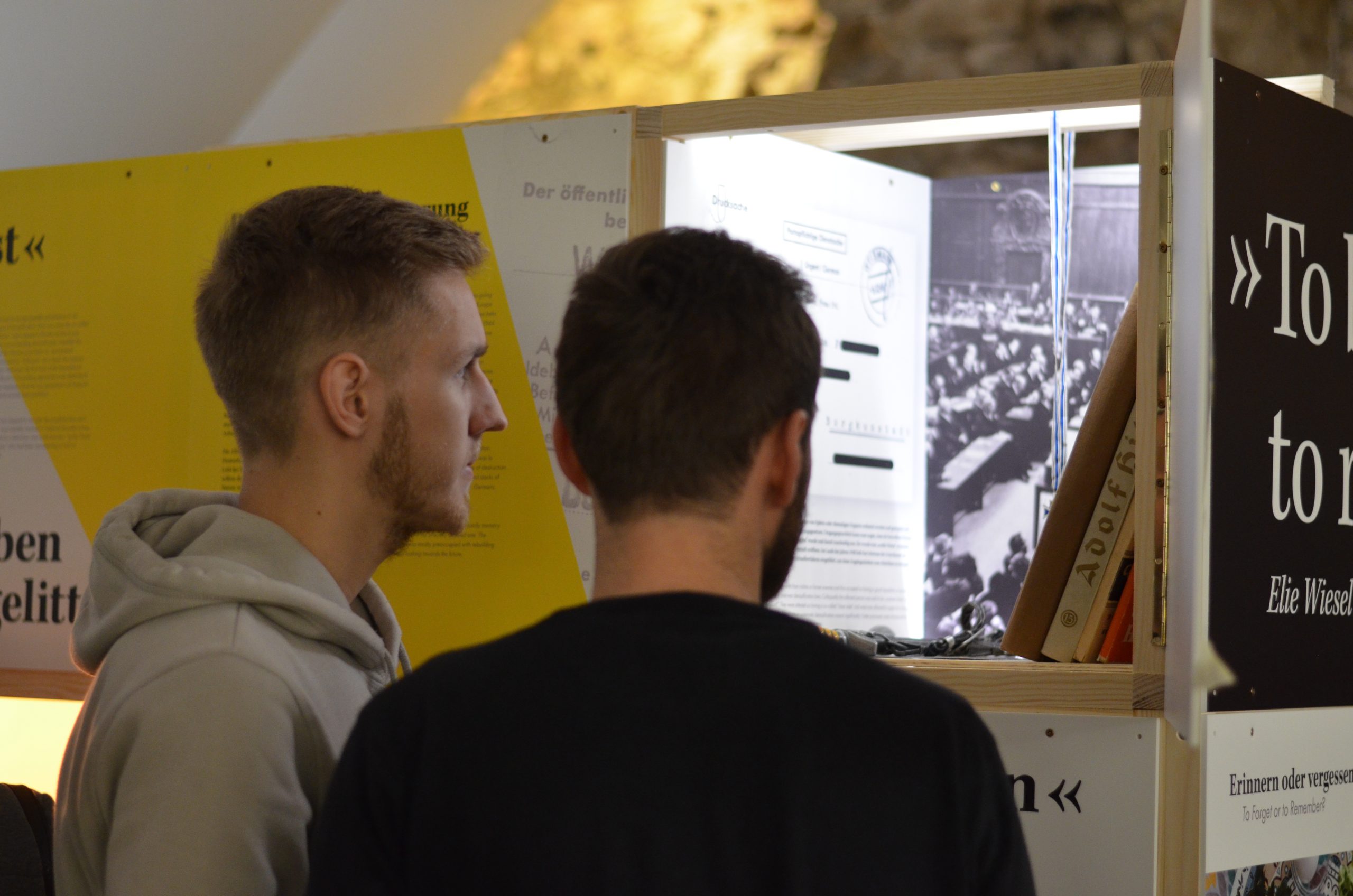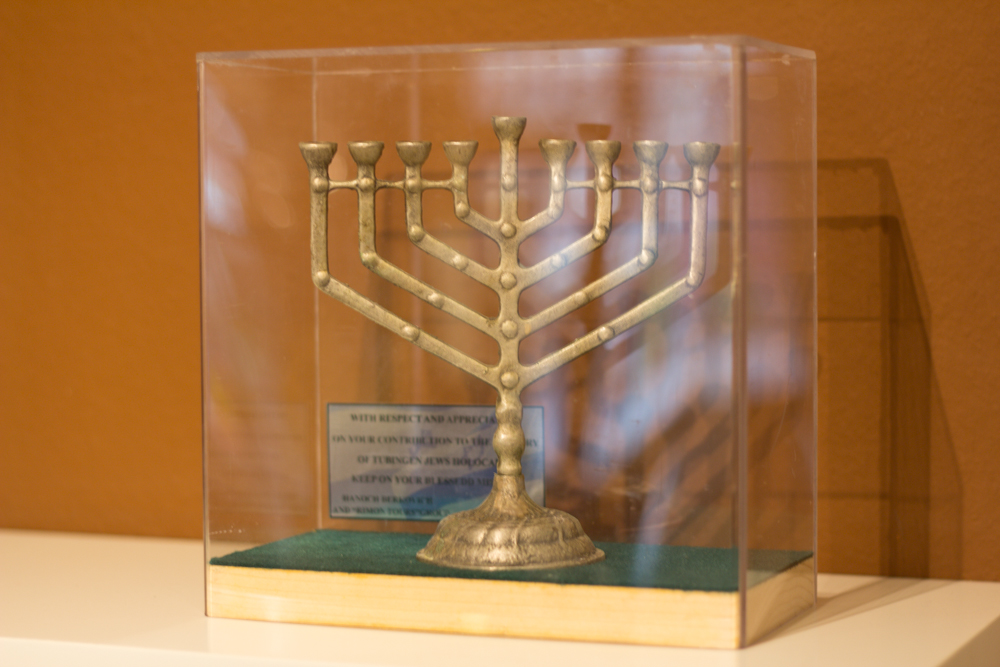Uncover – Discover – Breaking the Silence
Permanent Exhibition in Tübingen: Uncover - Discover - Breaking the Silence
Opened in 2013 and updated in December 2018, the exhibition in the basement of the bookstore Treffpunkt Jesus live focuses on Tübingen’s role in the Nazi era and the city’s impact on Europe. It also tells of the reconciliation work by March of Life, in which the descendants of the perpetrators break the silence about the role of their own families. More than 10,000 visitors have seen the exhibition and were deeply moved by its message.
Since 2011, travel groups from Israel have been coming to the exhibition on their tour through Germany. In a short guided tour, they learn that the charming medieval town of Tübingen with its pretty, half-timbered houses produced mass murderers like Martin Sandberger, who are responsible for death of about 600,000 European Jews. Many of them studied at the University of Tübingen and then became leaders of Einsatzgruppen in Eastern Europe and lived on after 1945, largely without any consequences. The focus of each visit is the encounter between descendants of the perpetrators and the Israeli visitors, many of whom lost family members in the Holocaust. The hosts tell the stories of their families in a very personal way and how the confrontation with the past has impacted their own lives.

Opening hours
Mon – Sat 10:00 – 18:00
Phone: +49 7071 993 515
Treffpunkt Jesus live – Bookstore & Exhibition
Kronenstr. 9 – Entrance at the market place
72070 Tübingen, Germany
Voices
This museum is a must for everyone, especially Tübingen residents.”
Ruth Doctor, granddaughter of Hanna Bernheim, a Jewish resident who emigrated from Tübingen in 1939
“Very impressive exhibition. Thank you very much. As many school classes as possible
should come.”
Hilde Ehrle, Tübingen
“The exhibition impressed us greatly. We would like to express great appreciation for the research. We thank you very much – shalom!”
Felix and Heidi Rottberger, Holocaust survivors from Freiburg


Topics of the Exhibition
The historical section provides an overview of the history of the Jews of Tübingen and their settlement in the Middle Ages and the 19th century, as well as their emigration and expulsion during the National Socialist era. A city map shows where Jewish families lived in Tübingen and provides information about their fate. Biographies demonstrate how deeply Tübingen’s Jews were integrated into the community.
The exhibition also shows how the Nazi ideology manifested in the different areas of society and how Tübingen’s citizens reacted. The role of the churches in the city, for example, or the content of schoolbooks in primary school, are examined. Quotes from eyewitnesses give an idea of the atmosphere during this period.
In addition, the exhibition highlights the influence of the university. Through various institutes whose research “scientifically” substantiated the ideology of the National Socialists, Tübingen had a decisive influence in the German Reich. Numerous students from Tübingen joined the SD (Security Service) and filled important positions in the Reich Security Main Office. Of the leading personnel of the Einsatzgruppen in the Ukraine, Belarus and the Baltic States, 14% have a connection to Tübingen.
Visitors are taken into the post-war atmosphere of Germany, which has been marked by silence about one’s own involvement and guilt. A display shows how long it took for society to reach a general recognition of the Holocaust. Nevertheless, family history was overlooked, and although antisemitic and racist prejudices were no longer expressed publicly, they continued to simmer below the surface. The exhibition seeks to encourage visitors to break this silence within their own families.
As a further focus, the exhibition documents the March of Life movement. What began in 2007 with a one-time commemoration and reconciliation march has grown into a worldwide movement that motivates tens of thousands of people to take to the streets against antisemitism today and to stand with Israel. The March of Life has changed the lives of many Holocaust survivors and their families forever. The documentatries about the marches and the displays about the different activities of the movement hopes to inspire international visitors to become active in their own cities and nations.
Some Exceptional Objects of the Exhibition


Michail’s Prayer Strap from the Ghetto
The owner of the tefillin – Mikhail Koifman – was a little boy when he was in the Bershad ghetto, in present-day Ukraine. His father used to pray with this family heirloom every day, even when the war began. During the invasion of the city, the German army killed some 10,000 Ukrainians and Jews. The remaining Jews had to move to the ghetto, which later became the largest camp for Jews in Transnistria.
One day, a German soldier went into the house of the Koifman family, cut off his father’s tefillin and threw them on the street. And after the soldier left, Mikhail’s father took them back. He managed to repair the phylacteries, but only with plastic, which made them unfit for prayer.
In 2013, a group of young adults from the March of Life visited Mikhail and his wife Gita in Israel. Some of the group shared about the guilt of their families. Then Michail, who rarely spoke about his experiences in the ghetto, began to tell his story as well. After this special encounter, he presented this memento to the March of Life.
Hanukkia and Prayer Shawl
This hanukkiah and tallit belonged to the ancestors of an Israeli tour guide, who presented them to “the Jewish Museum in Tübingen” in 2010 as a token of appreciation to be displayed in the exhibition.
The tour guide’s grandfather, despite being imprisoned in Auschwitz, managed to preserve this tallit. In some parts of the prayer shawl, you can still see traces of blood.
The hanukkiah dates back to 1811 and was passed down from the tour guide’s great-grandmother, who survived the Treblinka concentration camp.